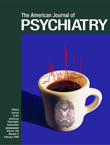As the pace of change and innovation in psychopharmacology increases, the writing of books covering this area in a timely manner has become more difficult. Thus, a survey of psychoactive drugs published in 1997, such as the one under review, has no mention of quetiapine, mirtazapine, or donepezil, barely mentions olanzapine or nefazadone, does not note bupropion’s use in smoking cessation, and provides information about ziprasidone and sertindole, which have not made it to market. This book still covers a great deal of useful information, however. It succeeds in meeting its goal of providing “sound and carefully considered specific guidelines to diagnoses, drug selection and dosing, and patient assessment.”
After a brief, lucid introductory chapter on practical guidelines in the conduct of pharmacological clinical practice, the book is organized by major diagnostic categories and special topics. The major diagnoses covered include depression, bipolar disorder, psychosis, anxiety, insomnia, and substance abuse. Overall, the chapters review the essentials of the disorders and their pharmacological management. Special topic chapters include geriatric psychopharmacology, pediatric psychopharmacology, psychotropic drug use in pregnancy, HIV-related psychiatric disorders, eating disorders, borderline disorders, and, finally, medicolegal psychopharmacology. The logic of some of these choices is not made clear; why have a chapter on psychopharmacology of HIV-related disorders and not of medically related psychiatric disorders? Why a chapter on borderline disorders and not personality disorders? Why a chapter on pregnancy and not one on a broader range of topics related to women? Much in the geriatric and pediatric chapters repeats what is said in other sections but also highlights specific guidelines appropriate to the age group discussed. The chapter on psychotropic drug use in pregnancy is succinct, current, useful, practical, and well referenced. The chapters on eating disorders and borderline disorder are excellent summaries but have very few references after 1994. The chapter on medicolegal psychopharmacology is pithy and practical.
Each chapter is organized somewhat differently, which can be disconcerting. Some chapters are well referenced with objective statements and appropriate citations; others have selected readings at the end of the chapter rather than specific citations; one has no references at all. References in some chapters are current (as recent as 1996), and others have few references after 1990. Information in some chapters is repeated in other chapters, which is perhaps unavoidable in view of the fact that drugs are used in more than one disorder. Tables are liberally used in some chapters, sparse in others; the tables are useful in some chapters and repetitious of text in others. There are occasional inconsistencies in the information provided (e.g., one page advises that, because of enzyme induction, the dose of carbamazepine needs to be increased after 2 to 4 months, but another page counsels 2 to 3 weeks; patients receiving ECT should have lithium discontinued before ECT is started according to one chapter, but another chapter suggests continuing but closely monitoring lithium). These differences are difficult to avoid in a multiauthored book, even with strict editorial guidance.
In summary, despite suffering some of the pitfalls of a multiauthored text, this book is a reliable and useful guide for practitioners, residents, and students involved in the psychopharmacological treatment of psychiatric patients. To be thoroughly up-to-date, however, readers will need to scan their journals and the Internet regularly and frequently.

